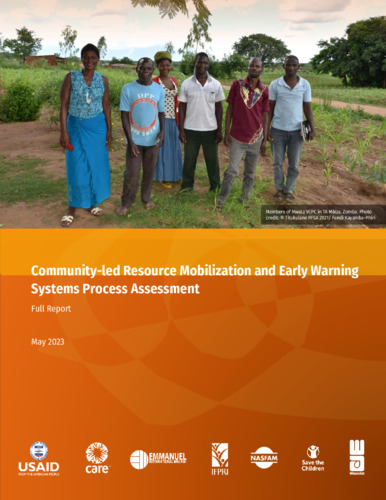Community-led resource mobilization and early warning systems process assessment: Full report
Abstract
This report examines the motivation and willingness of Village Civil Protection Committees (VCPCs) and communities to mobilize resources at community level for Disaster Risk Management (DRM). To do this, a participatory action research (PAR) approach was utilized, facilitated by SWOT analyses, in combination with focus group discussions (FGDs) and key informant interviews (KIIs). The findings revealed that communities had prepositioned resources to prepare for disaster response as part of risk reduction. Participants identified their ability to mobilize themselves as a community; to mobilize funds and food; well trained and knowledgeable structures, good agricultural practices, and good governance as major strengths. Opportunities for resource mobilization included enterprise, piece work (ganyu), irrigation farming, access to safety net programs, and youth participation. Weaknesses included the disorganization of some community structures, lack of support or political will from community leaders and the government, lack of accountability from VCPC members, and reluctance to adopt improved agricultural practices. Community-based early warning systems, although available, are insufficient to provide effective risk reduction for natural disasters. There is a lack of documentation concerning indigenous early warning systems, which impedes the development of effective and contextual strategies for risk reduction. The recommendations include increasing awareness among traditional leaders, defining resource mobilization structures, documenting guidelines and transactions for transparency, investing in early warning infrastructure and capacity building, documenting indigenous early warning signs, and intensifying watershed restoration and conservation to increase disaster preparedness.

